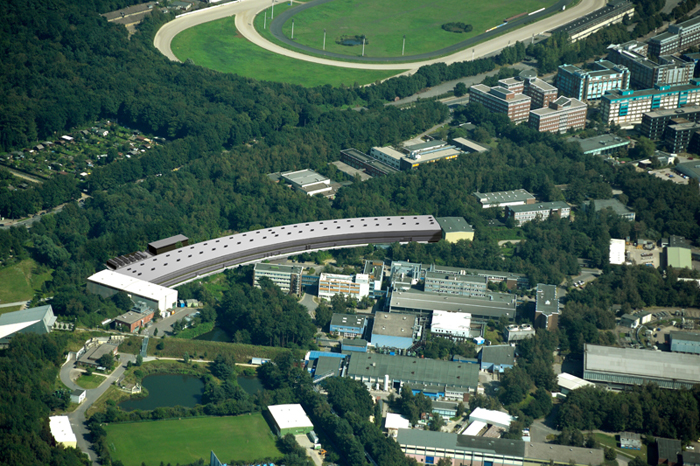New Facility for Structural Biology to investigate the molecules of life with powerful synchrotron radiation
EMBL Hamburg builds an Integrated Facility for Structural Biology at PETRA-III – EMBL@PETRA-III

The German Federal Ministry for Education and Research (BMBF) has awarded 8.8 Million Euro to the Hamburg Outstation of the European Molecular Biology Laboratory (EMBL) for the construction of an Integrated Research Facility for Structural Biology at the new PETRA-III storage ring of the German Synchrotron Research Centre (DESY), named EMBL@PETRA-III. The new facility will comprise a complete and automated pipeline for structural investigations of proteins and other biological molecules using the high-energy X-rays of PETRA-III, soon to be one of the world’s most powerful radiation sources. The new addition to EMBL Hamburg’s existing structural biology facilities will start operations in 2010.
X-rays are an extremely powerful tool in the life sciences. The crucial molecules that determine our life, such as proteins and DNA, are too small to be observed with even the most sophisticated light microscopes. At EMBL Hamburg, structural biologists use the high-energy radiation of DESY’s synchrotron to generate three-dimensional images and to study the structure of biological molecules. Often the high-resolution images of proteins involved in diseases serve as the starting-point for the development of new drugs. In the last four years, EMBL Hamburg has for example solved the structure of over 30 proteins involved in causing tuberculosis and has identified several potential drug targets.
“PETRA-III will be one of the world’s strongest synchrotron rings with leading optical parameters,” says Matthias Wilmanns, Head of EMBL Hamburg, “but to foster the use of this radiation efficiently for the life sciences, it needs technical skills and experience. EMBL Hamburg has developed great expertise practicing research in structural biology for over 30 years and coordinating several big EU projects in the field. Now we will bring together the cutting-edge technology provided by DESY and our expertise in the life sciences in the new Integrated Facilities for Structural Biology at PETRA-III to make them available to the scientific community.”
EMBL@PETRA-III and its services will be accessible to structural biologists from all around the world and user time will be allocated exclusively according to scientific merit. The new facilities at PETRA-III will allow to investigate protein machines of unprecedented complexity and size and provide the unique opportunity to carry out pilot experiments in life sciences in preparation for the future X-ray Free Electron Laser at DESY.
EMBL@PETRA-III will feature three state-of-the-art synchrotron radiation beamlines. One of them will be dedicated to “Small Angle X-ray Scattering”(SAXS), which studies proteins or protein complexes in solution to infer their overall shape and gain knowledge about dynamic processes in biology. The other two beamlines will be used for crystallography, a technique to determine the structure of crystallised proteins. The extremely focused synchrotron beams of PETRA-III will reveal atomic details of crystals as small as the fraction of a micrometer for the first time. The new facility will also house infrastructure for high-throughput protein crystallisation, sample preparation and characterisation and data processing, allowing all steps of structural investigation of molecules to be carried out under one roof. This will greatly speed up the investigation of molecules relevant to life and disease.
“This unique facility will allow us to go beyond current physical limitations and to tackle problems that were out of reach in the past,” says Thomas Schneider, Project Coordinator of EMBL@PETRA-III. “It will not only strengthen Europe’s role as a key player in the life sciences, but will also further raise the profile of the city of Hamburg in the European research landscape.”



